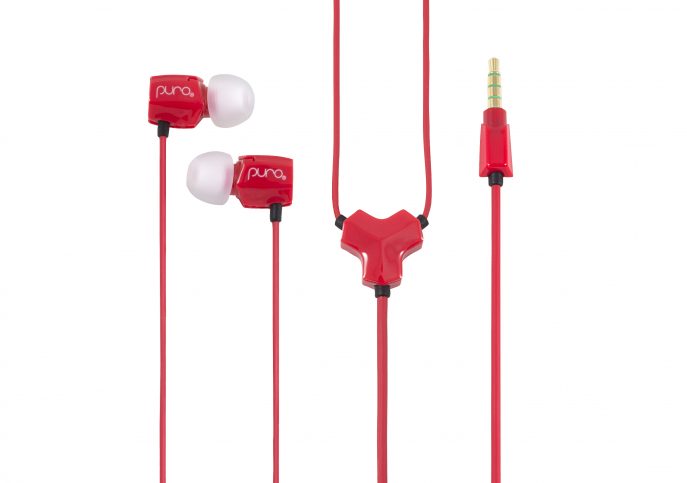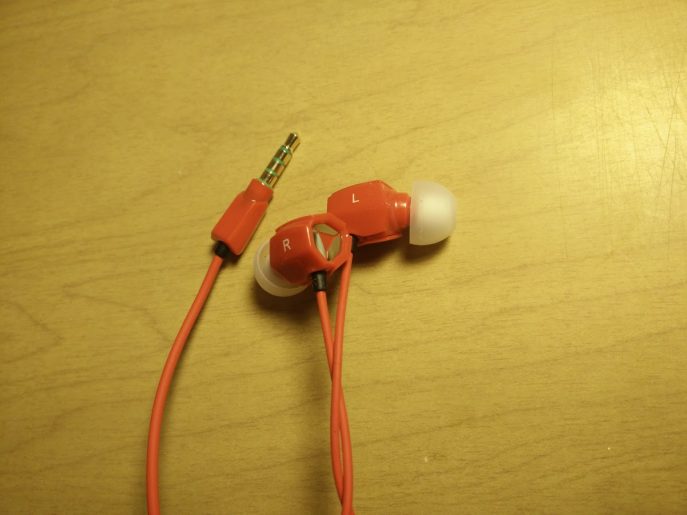
Puro Sound Labs is a company started up in 2014 when Dave Russell, the founder, was informed that his daughter Niki had developed noise-induced hearing loss (NIHL). Since learning this, Dave has worked hard in creating a company that is dedicated to fighting NIHL with modern technology.
Puro’s website notes that a common cause of NIHL in children were from headphones and the exposure to high sound levels. With this information in hand, Puro has crafted headphones that attack this problem at its root; their headphones have built in volume safeguards and superior isolation capabilities.
The philanthropy and community service that Puro contributes was a massive factor towards our initial interest in this company. A portion of Puro Sound Lab’s 2016 headphone sale revenue is donated to the Hearing Health Foundation. Puro has also partnered with the Sioux City Public Schools Foundation to provide headphones to each Middle School in that district. Another 10% of Puro’s online sales will also be donated back to the foundation as well. It’s a heartwarming story where a company “places their money where their mouths are”. They not only have innovative patent-pending technology targeted towards one of the leading causes of NIHL but also a physical initiative and revenue donation strategy.
Headphone.Guru has previously reviewed the Puro IEM-100 and warmly received it. We were delighted when Brett from Puro got in touch with us and requested we take a look at the new IEM-200 and OEH-200. The IEM is priced at $29.99 and the OEH portable headphone is $39.99 on their online store with the color options of black or red for both. The three primary features these two headphones touts are:
- Its built-in “unique volume governor” which limits sound output to 85dB on most devices.
- Puro Balanced Response© Frequency Curve which is tuning to mimic a flat and bountiful sound without excessive volume.
- 79% (IEM-200) | 80% (OEH-200) ambient noise isolation @ 1kHz
Volume Governor
The IEM-200 and OEH-200 have different implementations of the volume governor found in the original IEM-100. Puro has designed many of their products with a built-in limiter to the volume that can be output. This is most likely through an internal attenuator. The IEM-100 required you to press down on a switch to enable and disable the audio limitation. It also featured a volume control slider. The idea is fine but the actual implementation resulted in a fidgety switch that was a bit tight at times. The volume slider was an analog implementation and introduced noise (as expected) when sliding the switch which was unpleasant.
These use and implementation annoyances were fixed in the new models by eliminating the volume slider and switch to activate the limiter. The new headphones are created with the limiter always on and without the finicky user switch. While this may seem like a reduction in options, I would argue it isn’t. Designs for headphones have converged over the years and volume sliders and other gizmos have appeared in various units during this time. But in the current day, these analog sliders and switches on standard portable designs are largely gone for the very reason that they add options that aren’t necessarily wanted in the first place. The truth of the matter is that digital volume control is superior in low-cost designs and is especially so when you can leverage the media player to do so as opposed to controlling volume on the headphone itself.
The always-on limiter, in this case, also isn’t a reduction in option as our use case is geared towards what Puro stands for. Their brand philosophy is on safer hearing levels and this volume governor technology is found in most of their products. Buying a headphone with a feature towards safer (and limited) hearing loudness really makes it so that you can’t argue that a limiter is built in. In the typical audiophile realm, this limiter would make for active discussion on its need and use but we aren’t talking about that one.
IEM-200:

Build and Design:
The IEM-200 is largely a standard dynamic earphone. It comes with a soft carrying pouch, and three (S/M/L) interchangeable ear tips, and a quick-start guide. The case opens like a book to reveal the contents behind a transparent plastic cover. It’s a great size retail box for what it contains, is very sturdy, and has well designed graphics that convey the most pertinent details without going overboard. A good rule of thumb is for the text amount on the box to not be large enough to warrant reading while on the john. Puro has so far passed this personal test of mine with flying colors.

The rest of the unit was orthodox with good feel of the cables and driver units. It is mostly made of plastic but no unusual flex or wiggle was detected during my testing.
Usability:
The mic-housing and splitter partway down the earphone stands out like a sore thumb. It is in the shape of a three-leaf clover (or trefoil) where each “clover” also has wires leaving it at the central point. It looks great in the professional photos with its modern sharp and glossy edges. However, from a usability standpoint, I found the splitter unit to be mostly annoying and functionally awkward.
The two cables that go from the splitter to each earphone driver is angled in a peculiar fashion. Puro has designed it so that all cables enter and leave the trefoil following the sharp mid-section of each clover. It’s a common symmetry based design principle where you let lines “snap” to attention. This means that the cables going to the drivers are each angled at 45 degrees from the horizontal. From just looking at this design on paper, I didn’t find much wrong with it but real-world usage has proven otherwise. I found myself constantly fiddling with the splitter unit when trying to orient the earbuds or when packing.
The microphone worked well with my Android OnePlus One smartphone. It’s often a gamble when you buy headphones with a mic that you have to figure out if it is terminated in a way that fits Apple smartphones or most other Android smartphones. I did not have an iPhone on hand to test but my Android device was able to use the mic. The only hiccup I had was with the phone software where phone calls worked fine but app-based audio recording had volume issues. I believe this is due to the call application on my phone using automatic mic volume gain and normalization while the two audio recording apps I tried had it off by default.

Lastly, I was not always able to get a good fit with the earphones. I would have to often struggle to find the “right” spot to place it where I would get both sides to balance out. Nothing with the physical build seemed to impact this so I cannot say for sure if this was just a problem with myself and as s such, it won’t be factored into the review but rather is just a note I wanted to point out.
Sound
I used the earphone on products like the FiiO K1 and FiiO X7 which can produce more power than the typical smartphone. Thus, my daily usage does not factor into it the ~85dB volume limit of the IEM-200s. I did do spot testing with my smartphone and found the volume to be adequate on it and did not pursue. Since I was using higher power units than what the average consumer uses, I am able to control volume loudness as if a limiter was not built in and did sound quality tests at volumes to my liking.
The earphones had a deep timbre to it and a heavier low-frequency response. This means that there is a tight concentration of tones towards the mid-frequency range and a good bass to it. The IEM-100s by comparison were more openly spacious sounding with a more pronounced mid-detail and wide dispersal while maintaining an average bass response.
I listened to the complete OST of Makoto Shinkai’s hit 2016 film “Your Name” with the IEM-200 and was beyond impressed with the earphone. The main backing track of the film “Kataware Doki” had a complex mix of tremendous instrumental harmony followed by singular instruments. The mid-range carried excellent detail and instrument blending. The complicated parts of the song always sounded warm and never crackled or gave in to distortion that is commonplace on lower end units. The piano solo moments also carried breath in them; the holding of the keys and resonance of the notes were clearly heard.
On the other end of the spectrum, I listened to a mix of popular pop and rap tracks to test the unit’s adaptability to other genres and its bass response. The biggest factor I look for in sub $50 headphones is if it can hold its smoothness without getting hot or distorting; popular songs are good tests for this. One hit song I listened to with fantastic beat and bass was “Panda” by Desiigner. The IEM-200s responded favorably by delivering impactful with good extension; you could hear the quick bass drop off. Above all, the IEM-200 was smooth throughout the song and never got too hot (certain parts of the frequency range that have higher amplitude response creating sharp or uncomfortable parts). The vocals always delivered tenaciously and without issues from the boomy bass. I also had an excellent experience listening to other hit songs like “Don’t Let me Down” by the Chainsmokers or “Work From Home” by the Fifth Harmony.
The sound quality of the IEM-200 was incredibly smooth and thick with a pronounced bass. I was able to go through hour long listening sessions without common issues like being bright/hot, distorting at complex parts, or an overly sharp/muted vocal range.
OEH-200:
Build and Design:
The Puro OEH-200 is comprised primarily of plastic and very lightweight. The earcups and headband pads are rudimentary and reminds me of what basic model Sonys use. What matters though in the end is that they work well for their target market and they hit the spot here. They prevent sweat and dirt buildup and as the box notes, the materials used are water and lice proof.

The flat headphone cable and basic on-ear design works wonderfully. I’ve yet to find it in any sort of tangled mess or had to resort to engaging pliers to de-tangle the mess. They have been shoved in bags and randomly left in various states of use but it’s always come out clean and ready to use at a moment’s notice.
Usability:
The only issue I have had with the OEH-200 on usability is its earcup swivel mechanism. On-ear headphones typically need a degree of swivel to accommodate their placement and resting position on the ear. The OEH-200 is only able to swivel a few milimeters to the left or right on both sides. This is enough to fit most heads but I found situations where I would constantly try to twist the cups and found them, obviously, unresponsive to my pleas.

Sound
The OEH-200 shares striking similarities to the IEM-200 in the sound section. It has a deep timbre with an abundance of low-end bass to accommodate its warm sound. Artists sounded very musical and lively with good vocal extension.
Listening to “Ninelie” by Aimer with Chelly (Egoist) as used in ‘Kabaneri of the Iron Fortress’ was a treat with these headphones. The OEH brought out the strength of the female vocalists thunderous emotions. You could hear the strain in their voices as they nuanced their tones during the pre-chorus parts. The harmony between the two artists here were blended by the headphones such that you essentially heard one. In the case here, it was beneficial as it added a sort of after mastering ‘compression’ and increased the focus of the vocalists. On the other hand, the OEH’s thick timbre hid the small minute details of the artists such that the central ‘origin’ of the singer (who it was) couldn’t be identified as easily.
Next on the demo list was “Nagisa” by Jia Peng Feng as used in ‘Clannad’. This is the erhu version played by the famous musician and really brings out the instrumental qualities of the OEH. The lively string instrument is the star of the show and its vibrancy is ever present here. Each note had good texture and sounded realistic. The backing bass track was a wonderful addition and was demonstrated without issue on the headphone as the vocals and low-end kept their own without muddling up.
Overall, the OEH-200 is a near splitting image of the IEM-200 in their general sonic descriptions and I could not be happier. The tuning and final sound is a perfect descriptor of modern 21st century pop music and hits all the right notes. While micro-detail and the fine points are not the strengths of the OEH-200 and are what sets it apart from the big boys, it gets the main job done and will satisfy the target users.
Conclusion
The IEM-200 has many sonic strengths and it plays them well. It doesn’t venture into audiophile level quality but this was never a review of a unit in that range. For starters, there are issues in the design of the mic splitter that I would like addressed. Personally, I would also like a better fit!
As for the OEH-200, it shares the same fantastic sound quality but in a portable on-ear setup. In this case, I would have liked a earcup with more swivel to them.
There are some things I can decisively say about the headphones presented here today. The Puro Sound Labs IEM-200 and OEH-200 are two of the best sounding sub $50 earphones I have heard. On a sonic level, they can even compete with $100 earphones. They played through albums of instrumental, classic rock, and modern pop like a Vitamix Blender; they annihilated everything I threw into it.
Next, I find Puro’s cause to be wonderful and a shining example of what dedicated people can do. Puro has made valuable community contributions and donations in just two short years since they were founded. Many companies have ‘beliefs’ and sappy statements they stand by but Puro is not only founded by this belief but takes steps to make a difference. The IEM-200 and OEH-200 is a fantastic earphone backed by a socially responsible company.
I highly recommend the IEM-200 or OEH-200 for anyone that likes great sound, supporting a good cause, or on a budget. The $29 sensation and a fantastic Christmas stocking stuffer.

Price: $29.99 IEM-200 | $39.99 OEH-200















Want to join discussion?
Feel free to contribute!